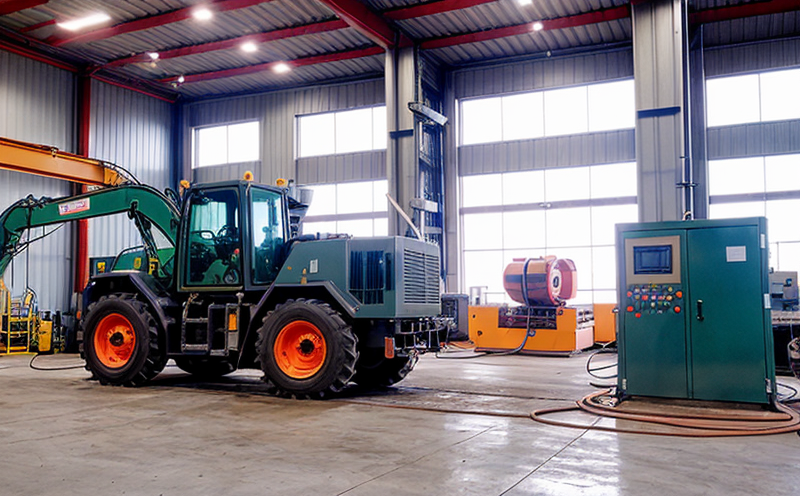Industrial equipment monitoring and maintenance are crucial aspects of industrial operations that can significantly impact a companys efficiency, productivity, and bottom line. In this article, we will delve into the importance of monitoring and maintaining industrial equipment, the benefits it offers, and provide detailed information on how to implement an effective monitoring and maintenance program.
The Importance of Monitoring Industrial Equipment
Monitoring industrial equipment is essential for identifying potential issues before they cause costly downtime or damage. When equipment is not monitored properly, it can lead to:
Reduced efficiency: Unmonitored equipment can operate at reduced capacity, leading to decreased productivity and lower output.
Increased downtime: Equipment failures can result in extended periods of downtime, which can impact production schedules and delivery timelines.
Higher maintenance costs: Failure to identify issues early on can lead to more extensive repairs or even replacement, resulting in increased maintenance costs.
Benefits of Implementing a Monitoring Program
Implementing a monitoring program for industrial equipment offers numerous benefits, including:
Improved efficiency: Real-time data provides insights into equipment performance, allowing operators to optimize production schedules and reduce energy consumption.
Reduced downtime: Predictive maintenance helps identify potential issues before they cause failures, minimizing the need for unplanned repairs.
Extended equipment lifespan: Regular monitoring allows for early detection of wear and tear, enabling proactive maintenance that can extend the life of equipment.
Detailed Information on Monitoring and Maintenance
Condition-Based Monitoring (CBM)
Condition-based monitoring is a method of monitoring equipment performance in real-time. It involves collecting data from various sources, including sensors, meters, and log files, to identify potential issues before they cause failures. CBM offers numerous benefits, including:
Real-time insights: CBM provides operators with immediate visibility into equipment performance, enabling them to make informed decisions about maintenance schedules.
Reduced downtime: By identifying potential issues early on, CBM helps minimize the need for unplanned repairs and reduces downtime.
Extended equipment lifespan: Regular monitoring allows for proactive maintenance that can extend the life of equipment.
Some common tools used in CBM include:
Vibration analysis
Thermography
Ultrasonic testing
How to Implement a Monitoring Program
Implementing a monitoring program requires careful planning and execution. Here are some steps to follow:
1. Identify Key Equipment: Determine which equipment is critical to production and should be prioritized for monitoring.
2. Select Monitoring Tools: Choose the right tools and technologies, such as sensors, meters, or software platforms, to collect data from equipment.
3. Develop a Data-Driven Maintenance Schedule: Use collected data to inform maintenance schedules and reduce downtime.
4. Train Operators and Maintenance Personnel: Educate operators and maintenance personnel on the monitoring program and how to interpret data.
5. Continuously Monitor and Review: Regularly review data to identify areas for improvement and adjust the monitoring program as needed.
Predictive Maintenance (PdM)
Predictive maintenance is a method of maintaining equipment by predicting when maintenance is required based on historical trends and real-time data. PdM offers numerous benefits, including:
Reduced downtime: By identifying potential issues early on, PdM helps minimize the need for unplanned repairs.
Extended equipment lifespan: Regular monitoring allows for proactive maintenance that can extend the life of equipment.
Improved efficiency: Real-time data provides insights into equipment performance, allowing operators to optimize production schedules.
Some common tools used in PdM include:
Artificial intelligence (AI) and machine learning (ML)
Data analytics software
Condition-based monitoring systems
QA Section
Q: What is the difference between condition-based monitoring (CBM) and predictive maintenance (PdM)?
A: CBM involves monitoring equipment performance in real-time to identify potential issues before they cause failures. PdM, on the other hand, uses historical trends and real-time data to predict when maintenance is required.
Q: What are some common tools used in condition-based monitoring?
A: Some common tools used in CBM include vibration analysis, thermography, ultrasonic testing, and sensors or meters to collect data from equipment.
Q: How do I select the right monitoring tools for my industrial equipment?
A: Determine which tools and technologies are best suited for your specific equipment and operations. Consider factors such as data accuracy, reliability, and compatibility with existing systems.
Q: What is predictive maintenance (PdM) and how does it differ from CBM?
A: PdM involves using historical trends and real-time data to predict when maintenance is required based on patterns or anomalies in the data. This approach differs from CBM, which focuses on monitoring equipment performance in real-time.
Q: How do I develop a data-driven maintenance schedule?
A: Use collected data to inform maintenance schedules and reduce downtime. Consider factors such as equipment usage, performance, and maintenance history when scheduling maintenance activities.
Q: What are some benefits of implementing a monitoring program for industrial equipment?
A: Implementing a monitoring program offers numerous benefits, including improved efficiency, reduced downtime, and extended equipment lifespan.
Q: How do I train operators and maintenance personnel on the monitoring program?
A: Educate operators and maintenance personnel on the monitoring program and how to interpret data. Provide regular training sessions and workshops to ensure everyone is familiar with the tools and technologies used in the program.
Q: What are some common challenges associated with implementing a monitoring program?
A: Some common challenges include selecting the right tools and technologies, developing a reliable data collection system, and ensuring that operators and maintenance personnel have the necessary training and support.

































